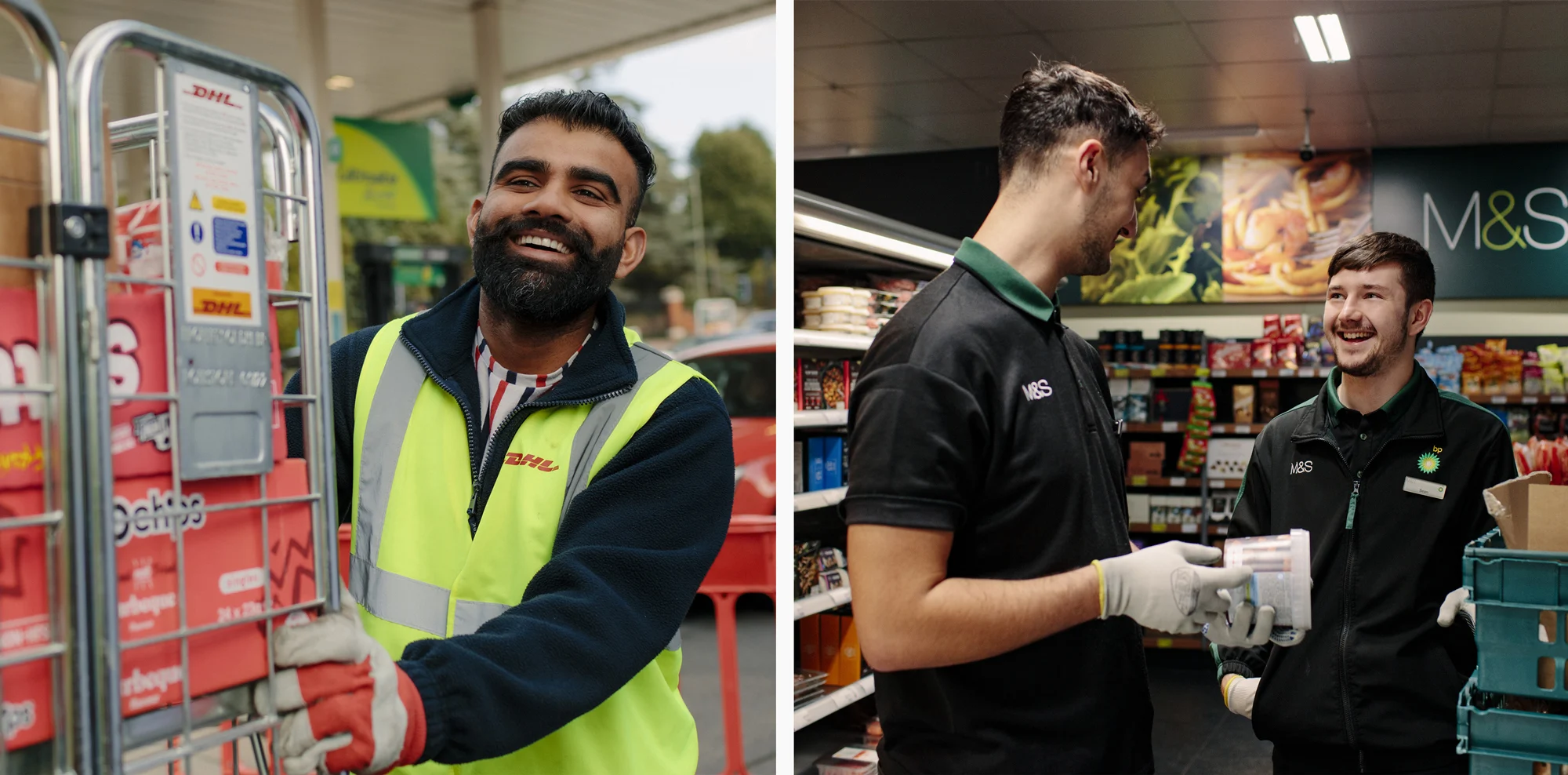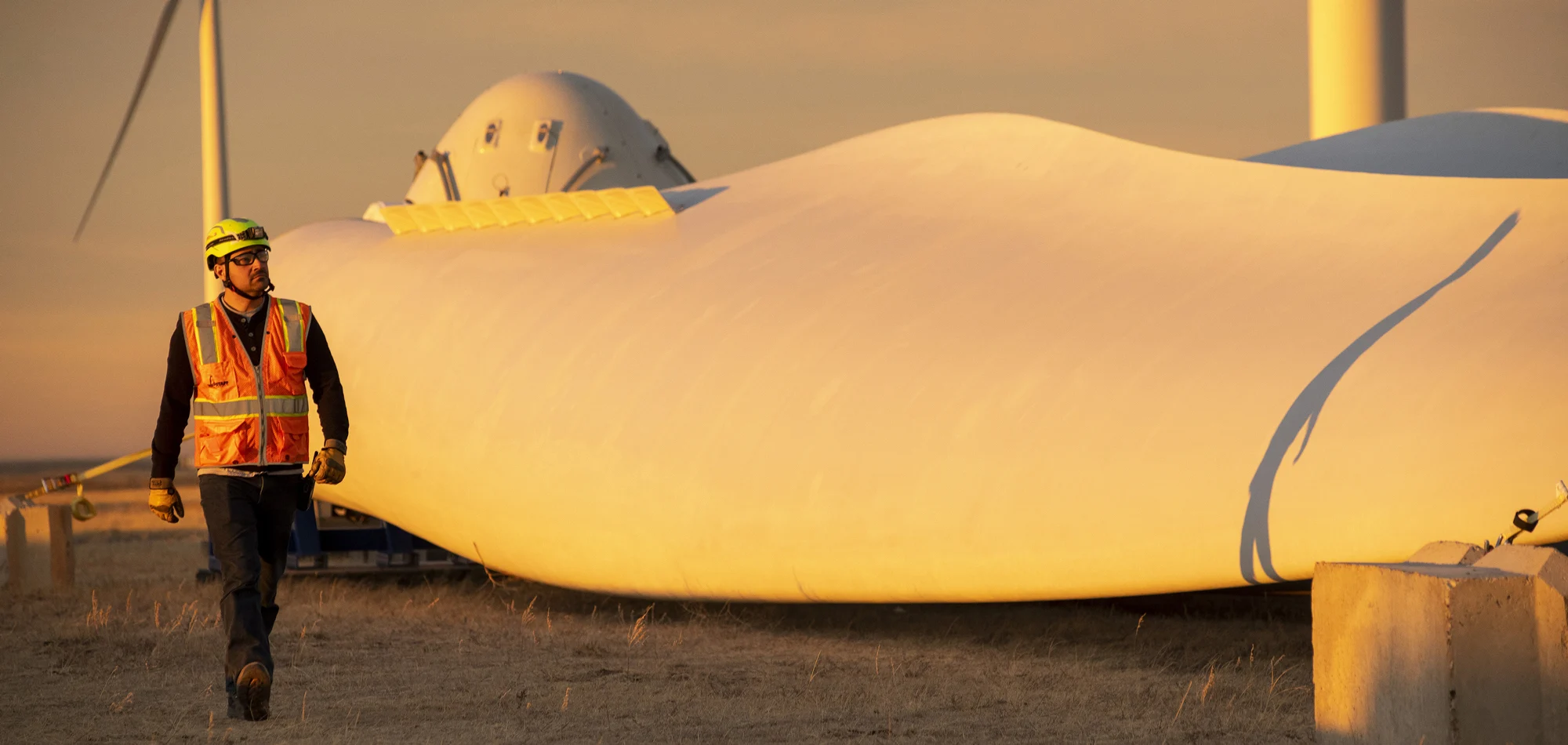Hats off to the team who’ve been keeping secure supplies of energy flowing, plugging in EV charge points, boosting our bioenergy production and much, much more.
Here are just some of the bp highlights from 2022


At bp, the end of a year is a great opportunity to take stock of all the things our teams around the world have achieved in the past 12 months.
Of course, 2022 has been incredibly challenging for many, not least the people of Ukraine. In February, we announced that we would exit our 19.75% shareholding in Rosneft. bp was the first international company to announce such an exit. As our CEO Bernard Looney wrote in a message to staff, this was ‘the right thing to do’.
The impact of the conflict in Ukraine has been felt right across the globe and thrown issues around energy security and the energy transition into sharp relief. As a company with its headquarters in the UK, we wanted to show how we are Backing Britain to deliver home-grown energy, so announced our intention to invest up to £18 billion in the UK’s energy system by the end of 2030.
And right around the world, our teams have been busy putting our plans into action. Ahead are just a handful of the many projects they have delivered on this year, helping us to accelerate towards our strategic goals.
January to March:
Future focus
We kicked off 2022 with a delicious announcement to extend our 16-year collaboration with M&S Food. First established in 2005, this incredible partnership has played a key role in how the convenience retail landscape has dramatically changed. So much so, that convenience retail is now one of our five transition growth engines, alongside renewables, EV charging, bioenergy and hydrogen. Between now and 2030, we’re aiming to deliver $9-10 billion in earnings from these businesses.


In March, we announced plans to invest £1 billion in electric vehicle (EV) charging across the UK over the next 10 years. We also aim to triple the number of bp pulse charging points and roll out a world-class rapid and ultra-fast charging network to support the UK’s EV infrastructure needs. And we’re already at work, delivering more than 900 charge points this year.


Of course, March is also when the world celebrates International Women’s Day. This year, our Tangguh team did it in style, sharing a photo of some of the 450 women who work at our Tangguh liquefied natural gas (LNG) Train 3 project in Indonesia. Women also represent 50% of our apprenticeship programme in the country.
1Q highlight: secure energy in the GoM
One of our biggest – in all senses of the word – achievements during the quarter was successfully installing the mooring system for our new Argos platform in the Gulf of Mexico (GoM).


The 60,000-tonne floating production unit is the heart of our $9 billion Mad Dog 2 project and a key asset in our resilient hydrocarbons strategy. Once up and running, Mad Dog Phase 2 will produce up to 140,000 gross barrels of crude oil per day.
We also completed the first phase of our Herschel expansion project, a three-well development that is tied back to the Na Kika platform.
April to June:
Out to sea


It was all about wind in the second quarter, with two major projects to help grow our portfolio. In the UK, we kicked off our biggest offshore integrated site survey with our partner EnBW to prepare offshore wind projects in the Irish and North Seas. Altogether, the survey involved more than 200 people, totalling over 450 working days on seven vessels. The data we collected from the survey will help bp and EnBW to build efficient offshore wind farms. This survey work was an important first step towards delivering enough clean energy to power around six million UK homes.


Over in the US, we completed a major upgrade of our existing Cedar Creek II wind farm in Colorado. As well as new gear boxes and advanced sensing technology, we installed massive 97-metre blades to help the turbines capture more wind. And the old blades? They’ve been ground into dust to make lightweight concrete.
And in June, we took another major step in our low carbon ambitions when we signed an agreement to lead and operate the Australian Renewable Energy Hub. Based in the Pilbara, Western Australia, the hub has the potential to become one of the largest renewables and green hydrogen hubs in the world.
2Q highlight: preparing for start-up
Projects don’t get much bigger than our Greater Tortue Ahmeyim (GTA) gas field off the coast of Mauritania and Senegal. With enough gas to support production for at least 20 years, GTA is, in fact, the largest project in our portfolio. First gas is due at the end of 2023, so this year was all about hitting our construction and installation milestones, including the final installation of 21 caissons. Each 16,000-tonne concrete structure is almost the size of the Arc de Triomphe in Paris, and together they protect our new hub and terminal from rough weather and ocean conditions.
July to September:
Working together
The second half of the year brought announcements about two new partnerships. First up, we formed a strategic collaboration with thyssenkrupp Steel. Together, we are focusing on developing a long-term supply of low carbon hydrogen and renewable power to help accelerate the energy transition in an industry that is historically difficult to decarbonize.


Meanwhile, in August, bp and Eni announced ‘go-live’ of a new 50/50 independent joint venture (JV) combining the two companies’ Angolan businesses. Called Azule Energy, the JV is now Angola’s biggest independent equity oil and gas producer, with a combined 2 billion barrels equivalent of net resources plus big plans for growth.


Like steel, the shipping industry is incredibly important for modern life, since it transports 90% of the world’s traded goods. However, it also accounts for around 3% of global carbon dioxide emissions. So while we keep the energy moving, we’re also introducing new ways to help decarbonize the shipping industry, including advance sensors, more biofuel and a proactive cleaning regime.
3Q highlight: decarbonizing heavy transport
We took our first steps to help another challenging industry with lowering its carbon emissions in July, opening our first ultra-fast-charging facilities in Germany aimed at medium and heavy-duty electric trucks. The 300-kilowatt chargers are capable of adding approximately 150-200 kilometres (90-125 miles) of range in around 45 minutes, making them ideal for a variety of truck types and journeys.


We were also thrilled to learn that our Aral pulse brand is now the biggest EV charging network in Germany. Get all the latest news on the steps we’re taking in electrification over on our dedicated EV page.
October to December:
Steps in sustainability
The lower carbon transport theme continued into the final quarter of 2022, with the launch of bp pulse in Australia. This is a major stepping stone in our ambitions to install around 600 charge points across Australia and build the country’s most convenient fast-charging network.


Meanwhile, 15,000 kilometres away, Air bp supplied fuel for an RAF Voyager aircraft using 100% sustainable aviation fuel (SAF). This is the first time a UK flight used this lower-carbon jet fuel entirely. Air travel is one of the hardest forms of transport to decarbonize, but SAF could have an important impact. Made from waste-based sustainable feedstocks, such as used cooking oil, it can reduce lifecycle carbon emissions by up to 80% compared to the conventional jet fuel it replaces.
We rounded out the year with a celebration: marking the fifth anniversary of our solar joint venture, Lightsource bp. These days, a solar farm isn’t just about the sunlight it captures. With the right help, it can become a living, breathing ecosystem. That’s exactly what Lightsource bp is now exploring thanks to two ecological studies at our Nittany solar projects in Pennsylvania, US.
4Q highlight: big move into bioenergy
In October, we agreed to buy a leading US biogas company called Archaea Energy. Archaea currently has more than 80 projects in its development pipeline that underpin the potential for around five-fold growth in its renewable natural gas production by 2030. This is a big deal for our bioenergy transition growth engine.


It also builds on the work we’re doing at our Cherry Point refinery to make renewable diesel from bio sources, such as waste vegetable oil and animal fat. This year, the Cherry Point team doubled its renewable diesel capacity and can now co-process around 2.6 million barrels a year.















